


Like Fauvists and Expressionists, Cubist painters did not want to paint an exact copy of what they saw (reality) but rather to show the truth.
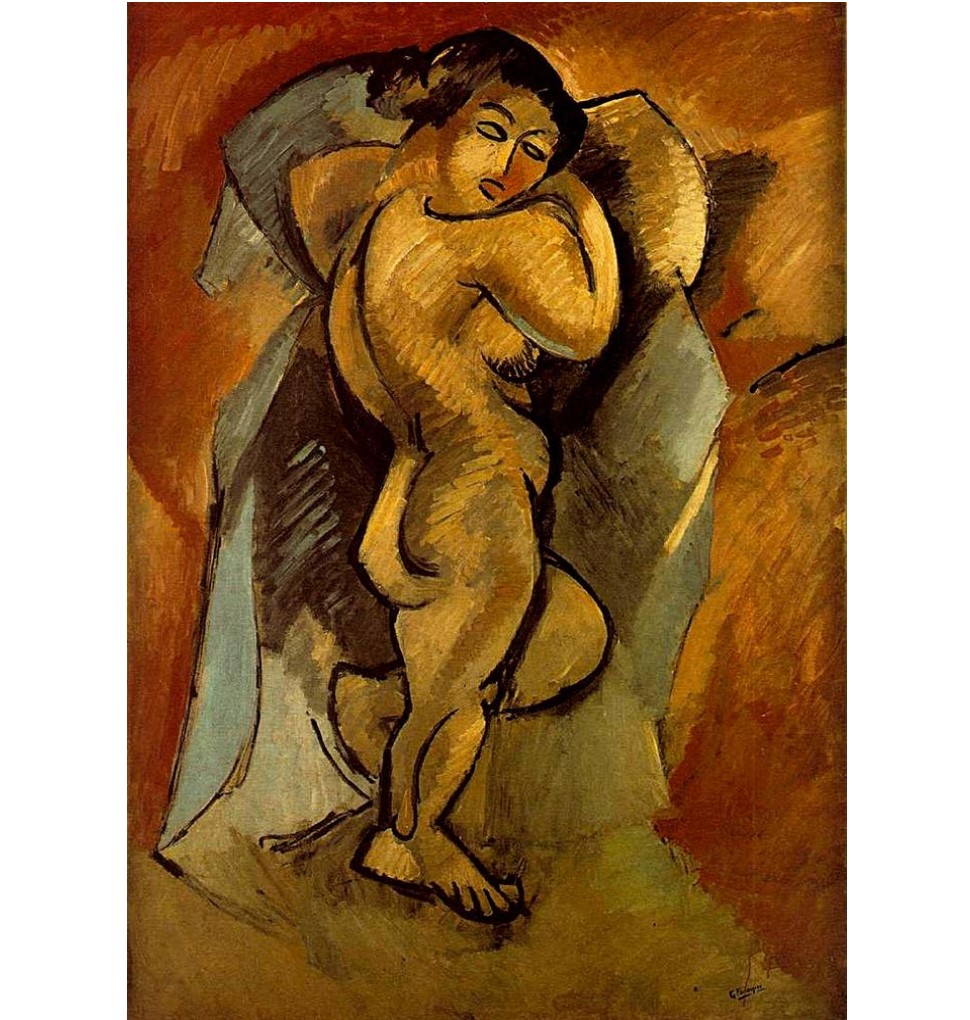
Now, truth cannot be reduced to a single point of view. For example, showing only one side of a house does not show the “truth” about the house, because it is only seen from one viewpoint! All the sides need to be shown to help try and grasp the “truth” about it.

Cubism is an attempt to show the truth about its subjects, which means showing all aspects.
Picasso grew up in Spain. He was a child prodigy: “When I was 8 years old I could draw like Raphaël, but it took a lifetime to learn how to draw like a child.”
When he was 20 years old, his friend Casegemas committed suicide. Picasso entered what is known as his “blue period”, portraying misery and suffering in shades of blue.
In 1904 he moved to Paris and entered his “rose” period, painting harlequins and acrobats in soft shades of orange and pink.
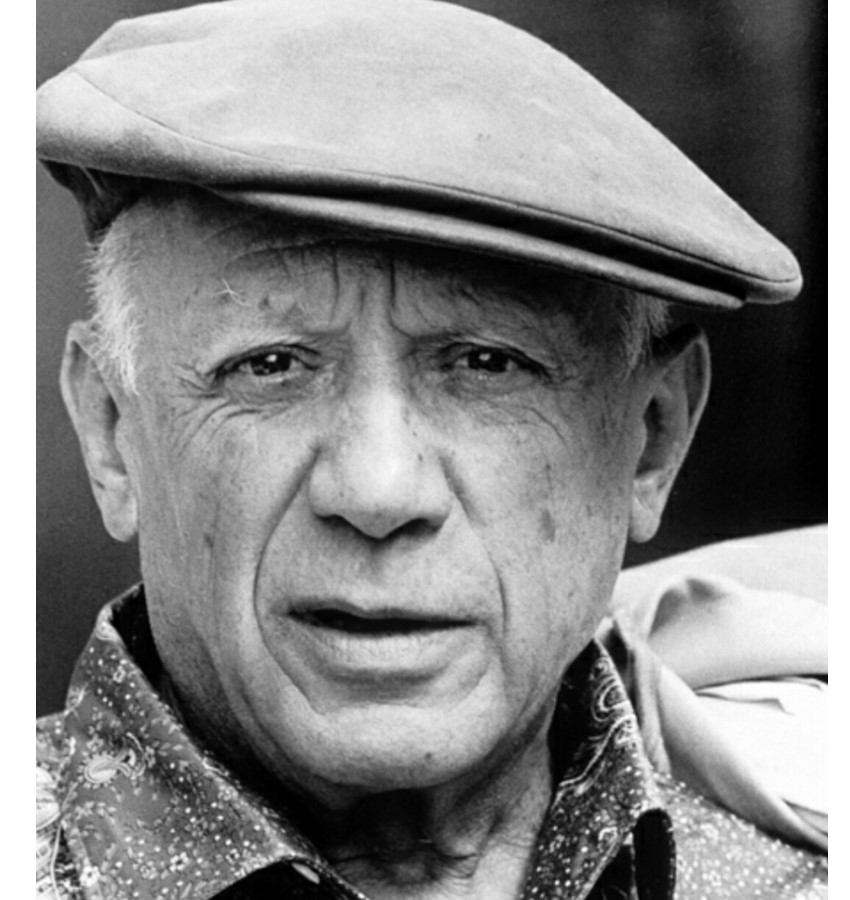
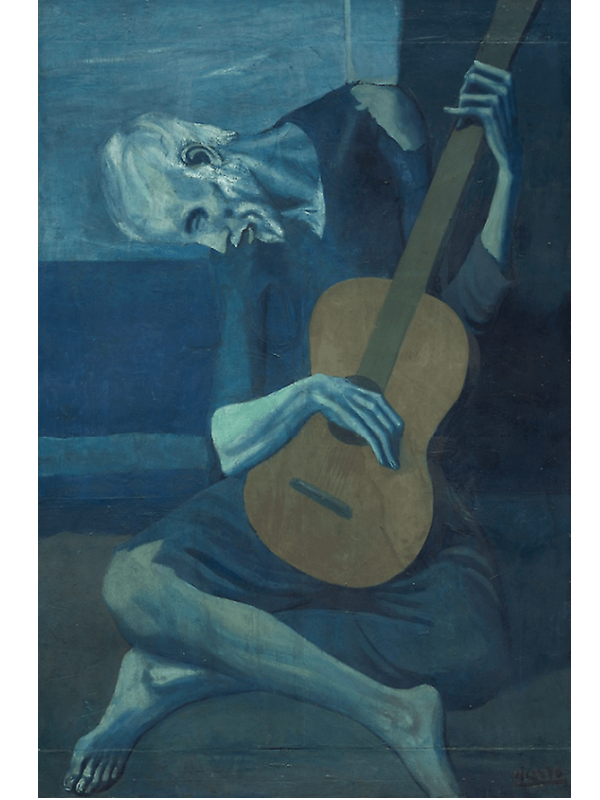
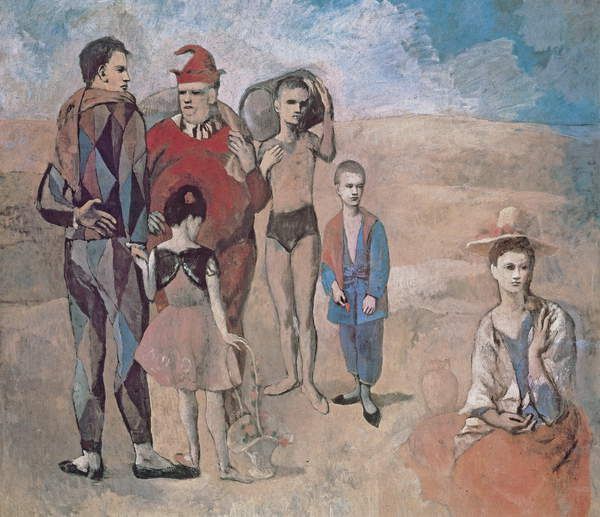
In 1907, he painted Les Demoiselles d’Avignon, (The Young Ladies of Avignon) breaking with all of Western artistic tradition and launching the Cubist movement with Braque.
After Cubism, he continued to produce tens of thousands of works, including Guernica in 1937, a masterpiece marking his anti-war commitment.
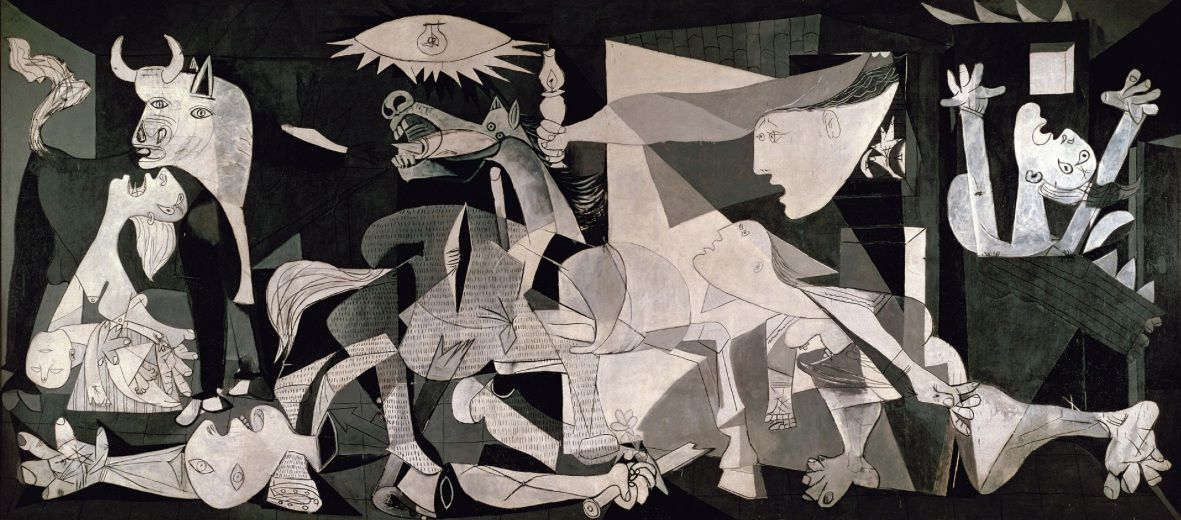
After 9 months’ work and more than 700 preparatory drawings and paintings, we may safely say that the painting Les Demoiselles d’Avignon was a major work for Picasso. In addition to this, many avant-garde artists came to see it in his workshop in the Bateau-Lavoir in Paris, initially finding it hard to understand.
These “demoiselles” were, in fact, prostitutes working in rue d’Avignon, a street in Barcelona. Where did Picasso find inspiration for this new style? He gave birth to the artistic movement of “Primitivism” by looking at African art, especially masks.
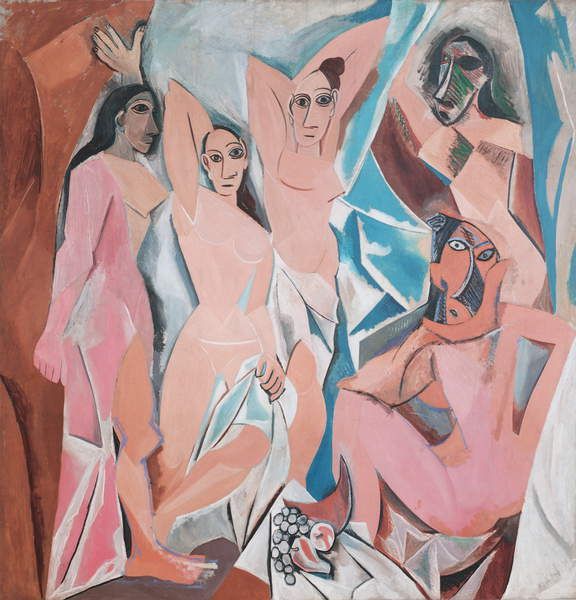

For his masterpiece Les Demoiselles d’Avignon, Picasso drew inspiration from African masks.
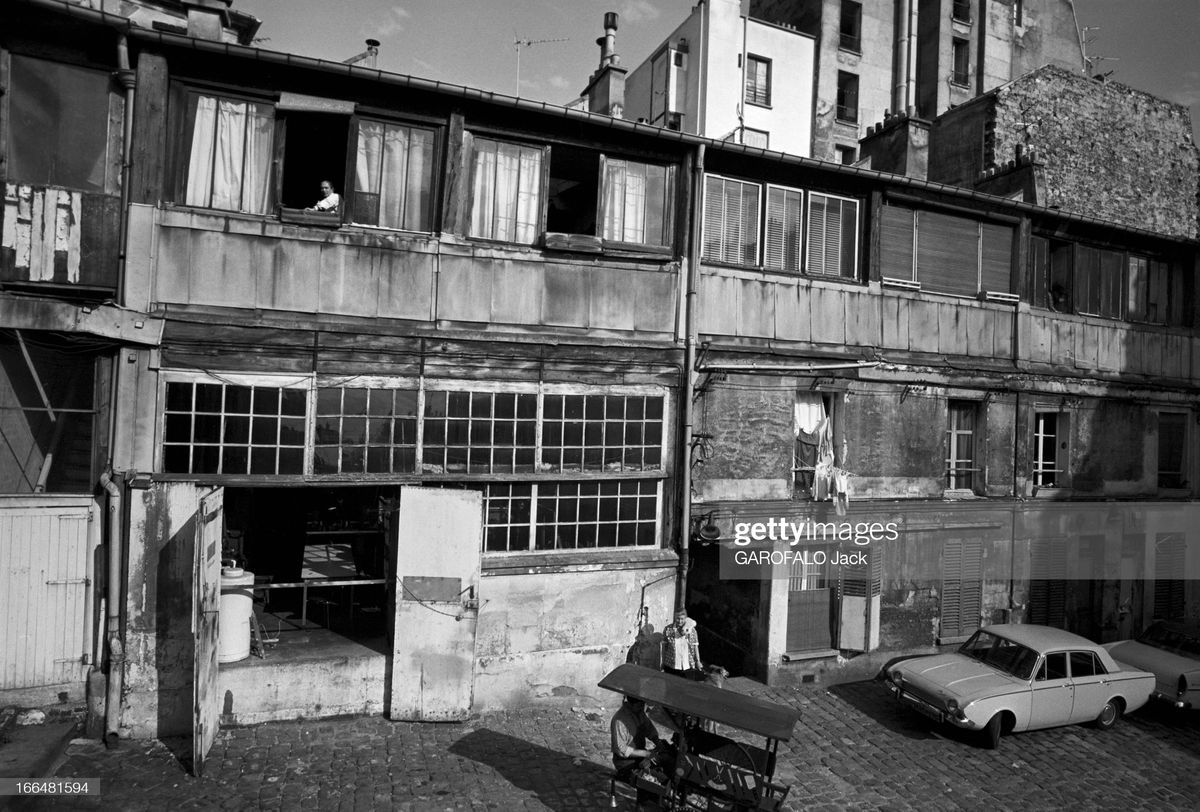
The studio where Picasso painted Les Demoiselles d’Avignon, beginning in 1906, is in the Bateau-Lavoir, a funny-looking building on Montmartre Hill in Paris.
The artist did not work alone there. The sculptor Brancusi, the painter Modigliani and the poet Max Jacob also led a bohemian lifestyle there.
It was Max Jacob who, with some irony, gave this site the name Bateau-Lavoir:

Picasso lived in the Bateau-Lavoir; a shared artists’ residence in Montmartre.
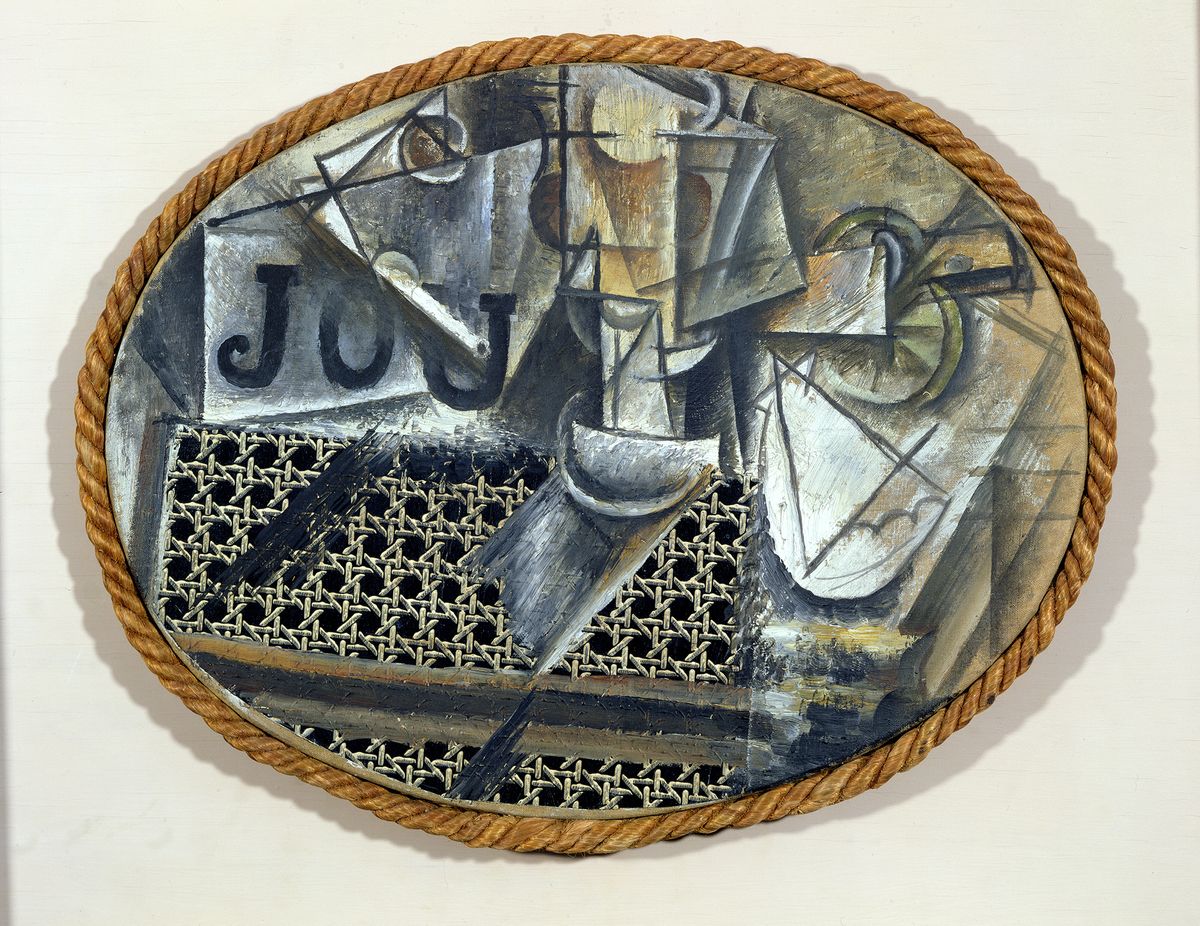
In 1912, Picasso painted Nature morte à la chaise cannée (Still Life with Chair Caning). He got a piece of waxed canvas which had a printed surface that looked like the top of a chair and stuck it directly onto the canvas.
This was the first collage work of modern art – never seen before! In addition, the shape of the painting is like a chair seat and the painting and the object merge together.
After that, Cubists would stick numerous materials on their works: sand, newspapers, cardboard boxes, wood and even … rubbish!


During the 1910s, Picasso innovated with collages and other Cubist artists quickly followed his example.
Other artists would soon follow in the footsteps of Braque and Picasso. Some, like Mondrian, Malevich or the Delaunays (they are all discussed in the next chapter) invented new art movements out of Cubism.
This also happened in Italy, with a group of artists who wished to be known as Futurists. They adhered to the main principals of Cubist codes (geometrical shapes, multiple points of view …) but found that this was not dynamic enough. What they wanted to do was to portray movement and speed!
Look at Dynamisme d’un chien en laisse (Dynamism of a Dog on a Leash): all the stages of movement are portrayed in the same picture!


Cubism inspired and motivated Futurists to represent movement in their painting.

…and artists were not spared this. They asked questions about the society they lived in: how could it have allowed such a catastrophe to happen?
As such, some representatives of the avant-garde movement thought that it was time to let go of the “excessiveness” of modern art and turn towards the art of the past, which they reinterpreted.

After two decades of artistic research, 20th century art turned for a time towards the past, trying to find new inspiration there.

"*" indicates required fields